
 If the thought of watching a low-budget slasher/Goth musical co-starring Paris Hilton makes your blood run cold, you’d do best to stop reading now, because you won’t find a truer example of this incredibly rare sub-genre than Repo! The Genetic Opera, from Saw sequel director Darren Lynn Bousman. If, however, you find yourself intrigued, by all means read on … and please seek some obviously much-needed psychiatric help.
If the thought of watching a low-budget slasher/Goth musical co-starring Paris Hilton makes your blood run cold, you’d do best to stop reading now, because you won’t find a truer example of this incredibly rare sub-genre than Repo! The Genetic Opera, from Saw sequel director Darren Lynn Bousman. If, however, you find yourself intrigued, by all means read on … and please seek some obviously much-needed psychiatric help.
Joining the hotel heiress are The Devil’s Rejects’ Bill Mosely and Skinny Puppy’s Ogre as the scions of Paul Sorvino, the ruthless owner of Geneco, the medical corporation that essentially rules a future world where elective organ transplantation is the norm. Diagnosed with an inoperable fatal disease, Sorvino sets in motion his plan to gain his final revenge on a past romantic rival (Anthony Head), which involves the corruption of the man’s sheltered young daughter (Spy Kids’ Alexa Vega).
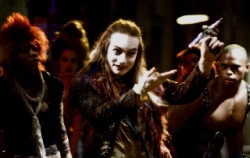 Also along for the ride is a still-fetching Sarah Brightman as Blind Mag, Geneco’s spokeswoman, whose upcoming retirement comes at a significant price. The film’s title references Head’s day job, which requires him to repossess the organs of unlucky Geneco customers unable to make their payments.
Also along for the ride is a still-fetching Sarah Brightman as Blind Mag, Geneco’s spokeswoman, whose upcoming retirement comes at a significant price. The film’s title references Head’s day job, which requires him to repossess the organs of unlucky Geneco customers unable to make their payments.
Bloody and over-the-top, the film plays like an oddly compelling combination of Ken Russell’s Tommy and Tim Burton’s Sweeney Todd, and while it doesn’t measure up to either of those films, it does feature impressive production values for what was obviously a very low budget, and a wordless cameo from Joan Jett, which is the best kind of cameo there is. —Allan Mott

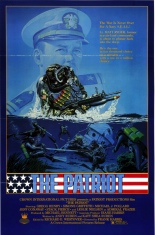
 There’s a reason well-known character actor Gregg Henry (
There’s a reason well-known character actor Gregg Henry (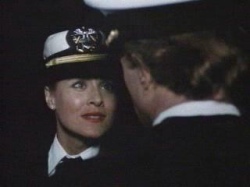 It casts Henry as a former Navy SEAL who was dishonorably discharged from ’Nam when he refused to take part in a pointless raid on a defenseless village, but who gets a chance to restore his good name when the death of a friend alerts him to a (poorly thought-out and rather nonsensical) conspiracy to smuggle stolen nukes out of the country through oil pipelines.
It casts Henry as a former Navy SEAL who was dishonorably discharged from ’Nam when he refused to take part in a pointless raid on a defenseless village, but who gets a chance to restore his good name when the death of a friend alerts him to a (poorly thought-out and rather nonsensical) conspiracy to smuggle stolen nukes out of the country through oil pipelines.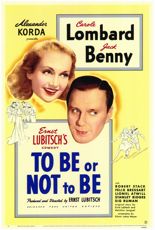
 Last year,
Last year, 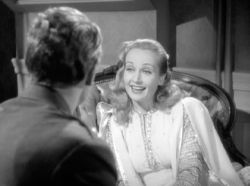 The film pairs TV legend Jack Benny (in what would be his defining film role) with the gorgeous Carole Lombard (who tragically died in a plane crash three months before its release) as Joseph and Maria Tura, Warsaw’s most beloved theatrical couple, whose company is forced to shut down following the Nazi invasion. Maria’s pre-invasion flirtation with a handsome Polish airman (Robert Stack) leads to their troupe using their acting skills to prevent a Nazi double agent from revealing the locations of the families of Poland’s exiled air force to the S.S.
The film pairs TV legend Jack Benny (in what would be his defining film role) with the gorgeous Carole Lombard (who tragically died in a plane crash three months before its release) as Joseph and Maria Tura, Warsaw’s most beloved theatrical couple, whose company is forced to shut down following the Nazi invasion. Maria’s pre-invasion flirtation with a handsome Polish airman (Robert Stack) leads to their troupe using their acting skills to prevent a Nazi double agent from revealing the locations of the families of Poland’s exiled air force to the S.S.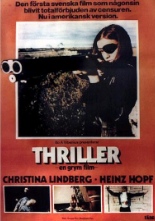
 Frigga quickly learns the consequences of rebellion when her pimp punishes her by plunging a scalpel into her right eye (earning her both the nickname described in one the film’s alternate titles and a reason to sport a series of stylish patches). Instead of breaking her spirit, however, this only inspires her to secretly charge her “clients” extra to do the really dirty shit (which, by today’s Internet porn standards, admittedly doesn’t seem so bad) and use the cash to buy her own drugs, and train with experts in the fine arts of ass-kicking until she’s ready to proclaim her independence and properly exhibit her (extremely justified) dissatisfaction.
Frigga quickly learns the consequences of rebellion when her pimp punishes her by plunging a scalpel into her right eye (earning her both the nickname described in one the film’s alternate titles and a reason to sport a series of stylish patches). Instead of breaking her spirit, however, this only inspires her to secretly charge her “clients” extra to do the really dirty shit (which, by today’s Internet porn standards, admittedly doesn’t seem so bad) and use the cash to buy her own drugs, and train with experts in the fine arts of ass-kicking until she’s ready to proclaim her independence and properly exhibit her (extremely justified) dissatisfaction.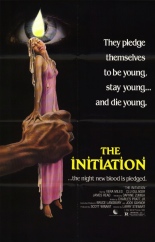
 An attractive, young coed from a wealthy family is left with partial amnesia after suffering through a traumatic incident everyone around her prefers to pretend never happened. A kindly psychologist attempts to help her recover her lost memories, while she deals with the perils of fitting in with her school’s most popular clique. But when people start dying around her, it becomes obvious that either she’s completely crazy or has a psychotic doppelgänger she doesn’t know about.
An attractive, young coed from a wealthy family is left with partial amnesia after suffering through a traumatic incident everyone around her prefers to pretend never happened. A kindly psychologist attempts to help her recover her lost memories, while she deals with the perils of fitting in with her school’s most popular clique. But when people start dying around her, it becomes obvious that either she’s completely crazy or has a psychotic doppelgänger she doesn’t know about.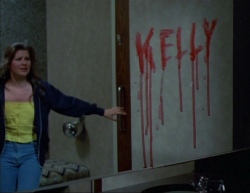 Based on my fondness for HB2M (which I would happily list among my top five slashers), you’d think this would cause me to dismiss The Initiation as an unworthy copycat, but it’s actually a pretty decent flick, despite its lack of originality. The principal reason: a script that takes pains to develop real, likable characters who we sympathize with, which makes it something of a revelation in a genre where it’s normal for everyone other than the lone female protagonist to be an asshole who needs to die.
Based on my fondness for HB2M (which I would happily list among my top five slashers), you’d think this would cause me to dismiss The Initiation as an unworthy copycat, but it’s actually a pretty decent flick, despite its lack of originality. The principal reason: a script that takes pains to develop real, likable characters who we sympathize with, which makes it something of a revelation in a genre where it’s normal for everyone other than the lone female protagonist to be an asshole who needs to die.